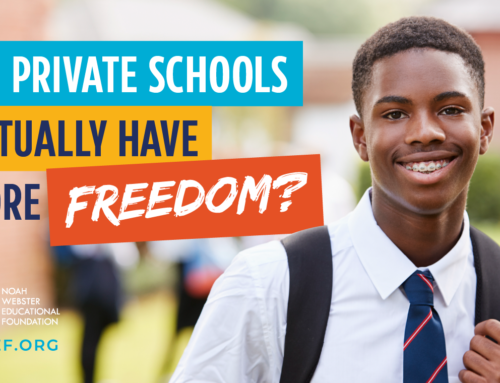
The “Education for the Disadvantaged” Plan
The Biden Administration has introduced a $20 billion plan aimed at curbing the national funding disparity between wealthy and poor school districts.
The New York Times reports that the program would assist high-poverty school districts. States will receive more funding if they can demonstrate that they’ve taken steps to reduce discrepancies between rich and poor districts.
According to the Times article, the American public school system is divided into 16,000 school districts. Most resources are in areas with a majority of white people.
School districts “where more than 75 percent of students are white receive $23 billion more per year than districts where more than 75 percent of students are not white — even though there are more students in predominantly nonwhite districts.”
The Times quotes Zahava Stadler, who works on education funding at The Education Trust. In her opinion, the Biden plan “wouldn’t just add money where it’s needed; it would also offer an important push for states to change the policies that create inequity in state and local funding.”
American schools have been working to improve by focusing attention on test scores and academic standards. However, schools have been building upon an unequal financial structure. Many politicians, parents, and teachers alike look with concern on the growing gap in test scores between white upper-income and poorer minority students. The Biden plan intends to fix these inequities.
The Biden Administration has not explained how the funding plan will work. The $20 billion plan is intended to supplement Title I’s $16 billion.
The School District Funding Debate
Others offer alternative explanations and solutions to school disparities.
National Review says that school problems are mostly unrelated to funding. For example, in Providence, RI, public schools are in poor condition in spite of the district spending close to $18,000 per student.
Poor discipline and ineffective teaching continue to banish progress in these schools in spite of large amounts of funding. Pouring money into a failing district was not the answer. In fact, the United States spends more on education than any other developed country.
Local politics, housing choices, and community values also play into school district funding differences.
In his article “The School District Boundary Problem,” scholar Aaron Saiger recognizes the political nature of school districts. He suggests regular redrawing of school districts to balance tax resources and prevent the economic fallout of “real estate choice.” In his mind, the same fairness principles behind reapportioning voter districts should apply to local school districts too.
He writes, “In such an environment [that is open to reconsidering school district boundaries], district boundaries are not understood to be [fixed] like rivers or streams. People realize that they reflect political decisions, and that political decisions therefore can be taken to change them.”
While there are pros and cons to his proposal, the fact remains: funding issues are more complicated than simple economic or racial disparities. Solutions must go beyond either wholesale condemnation of the current system or wholesale acceptance of it.
Some Americans argue that segregation and district inequalities can be addressed by simply giving parents the option of where to send their kids. Students do not have to be stuck in assigned districts.
The Good News in Florida, a monthly column from the legal community, discusses the improved educational opportunities available to students with school choice. For instance, Florida’s charter schools have higher grade performance than the traditional public school setting. They also have a lower achievement gap between white and nonwhite students.
In this article, Ed Pozzuoli, CEO of Tripp Scott, PA, says,
“The law is all about upholding individual rights and freedoms. It’s important to preserve these freedoms, especially of parents in communities of color, to allow them to choose the best solutions for their children – particularly in the face of relentless efforts by certain politicians, teachers unions and other special interests to take that choice away.”
School choice has been shown to increase opportunities and reduce inequalities for all students, but it is still not available nationwide.
What’s your opinion of the funding plan proposed by the Biden Administration? What solution do you think will make a lasting difference in school districts?




